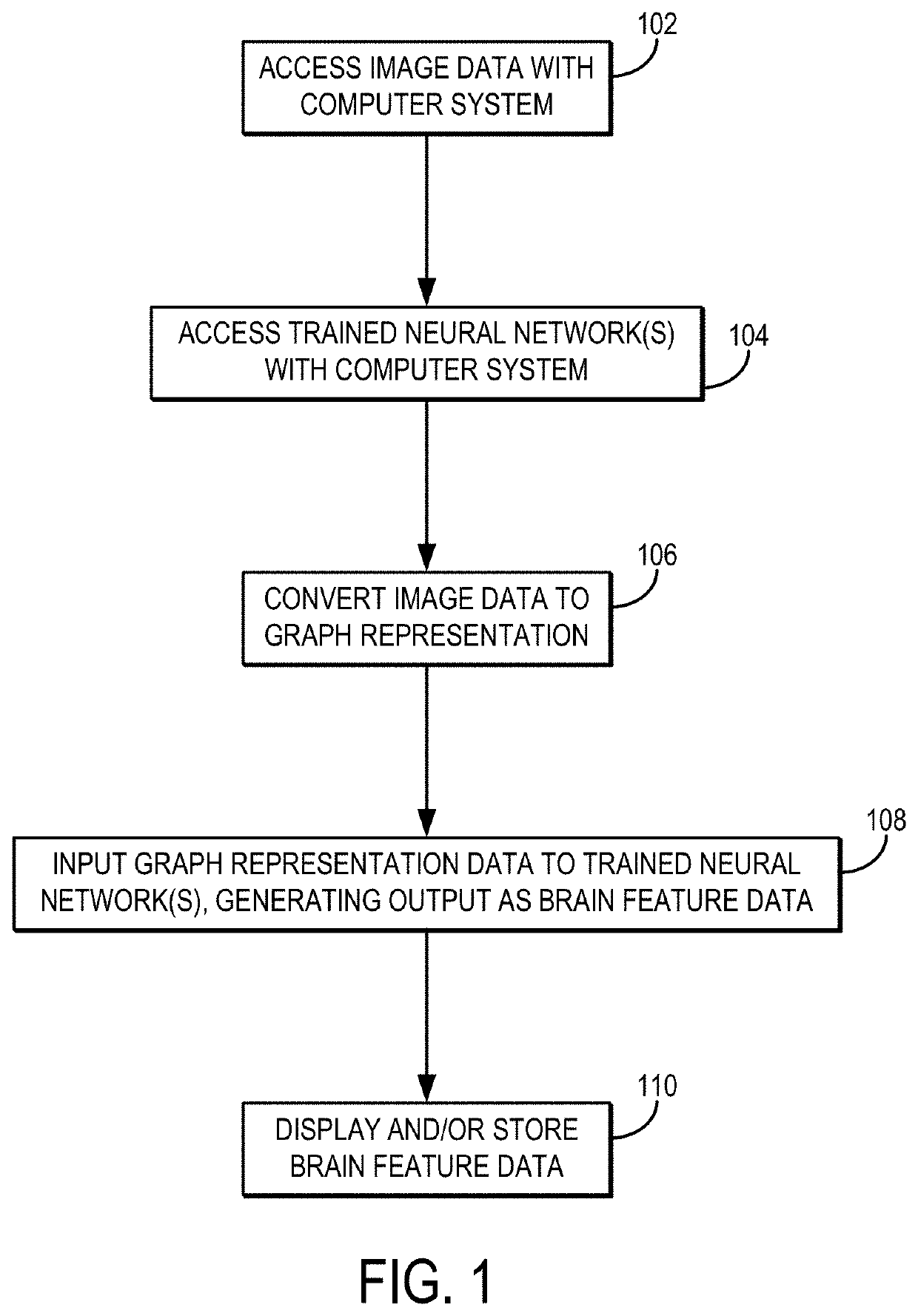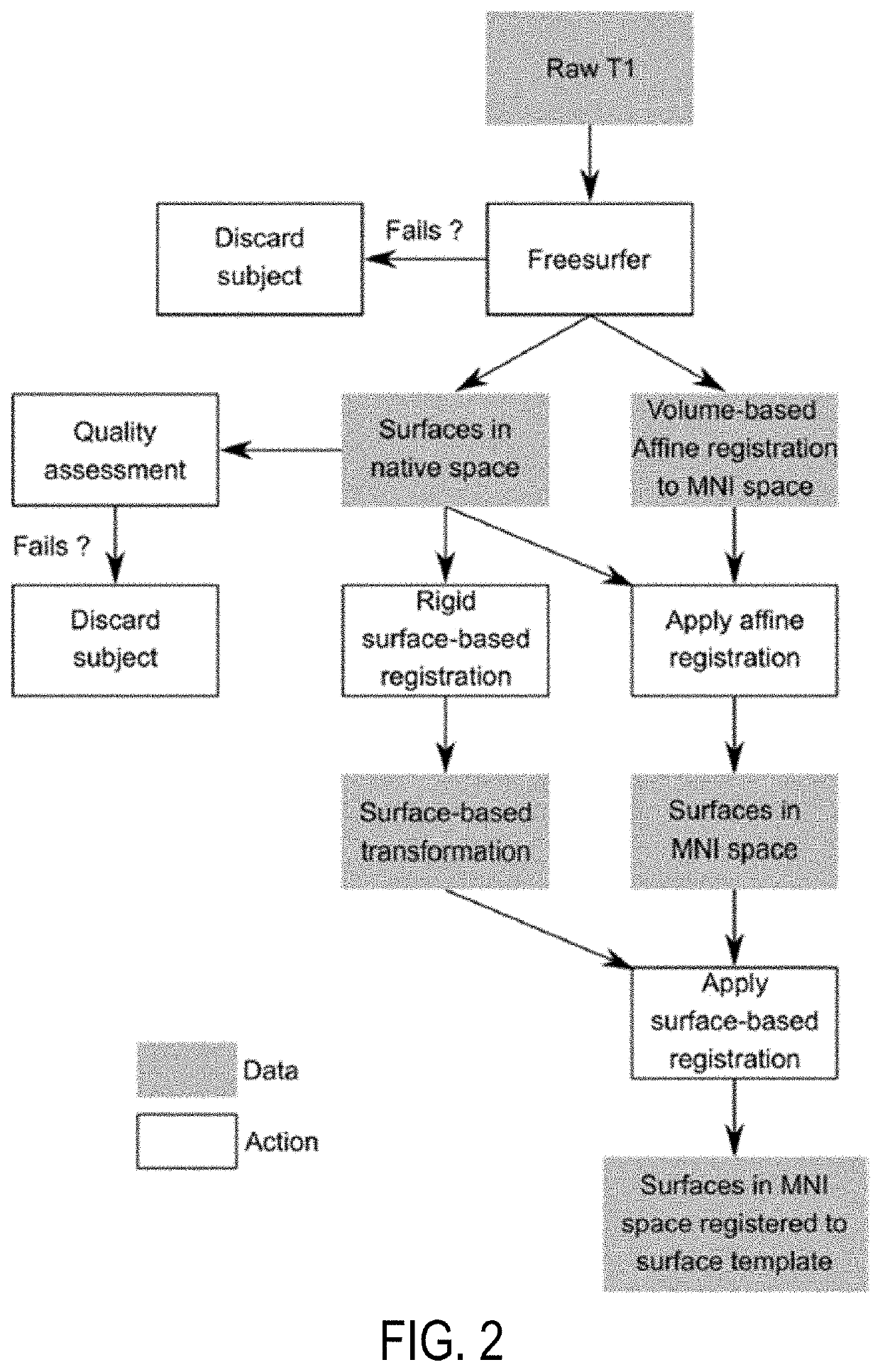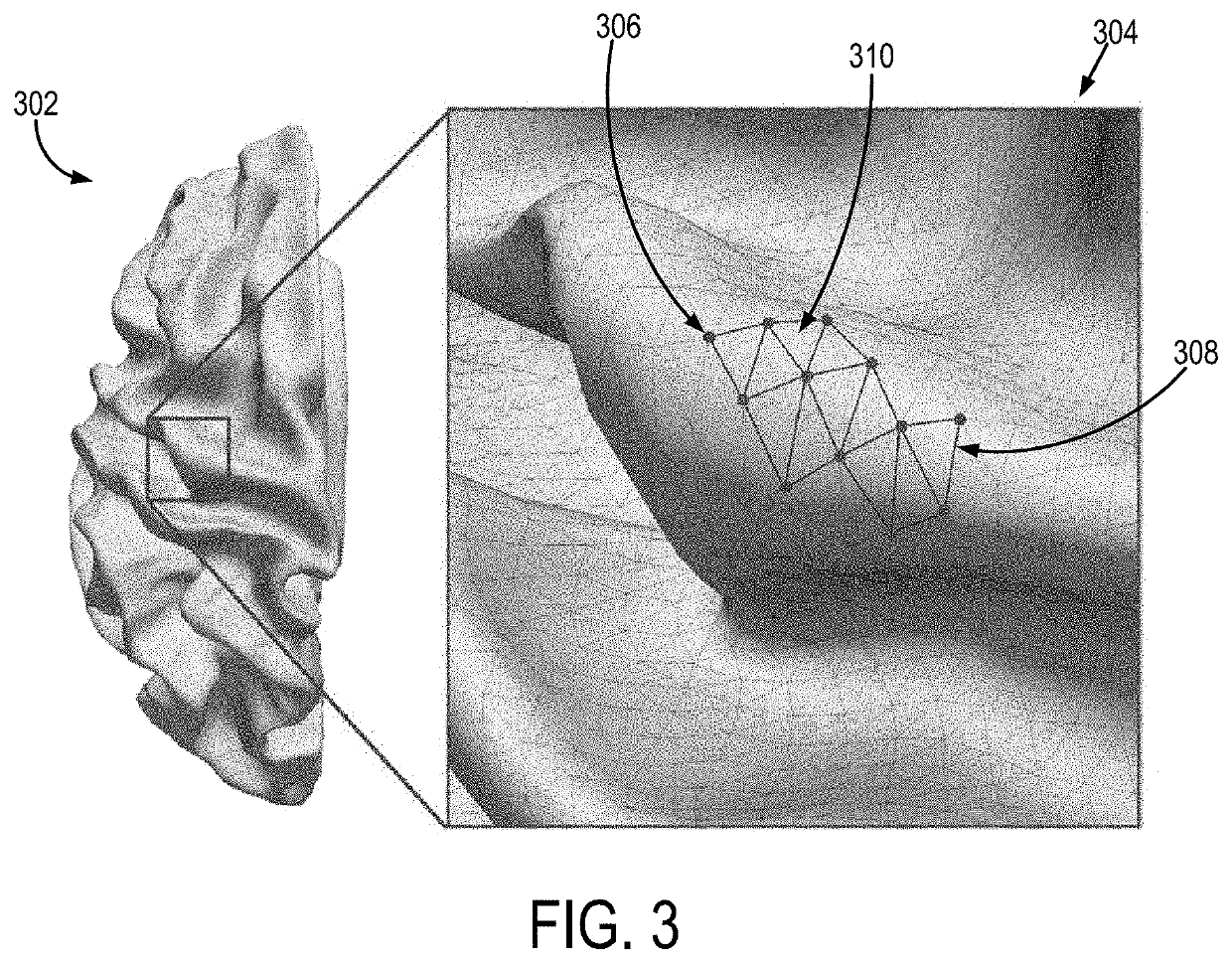Brain feature prediction using geometric deep learning on graph representations of medical image data
a technology of geometric deep learning and brain feature prediction, applied in image enhancement, diagnostic recording/measuring, instruments, etc., can solve problems such as restricting the use of cnn in many neuroimaging tasks
- Summary
- Abstract
- Description
- Claims
- Application Information
AI Technical Summary
Benefits of technology
Problems solved by technology
Method used
Image
Examples
Embodiment Construction
[0029]Described here are systems and method for predicting clinically relevant brain features, such as demographic information (e.g., age, sex) and / or disease state (e.g., Alzheimer's disease, epilepsy), using geometric deep learning techniques, such as may be implemented with graph convolutional neural networks or autoencoder networks that are applied to graph representations of brain surface morphology. As an example, graph convolutional neural networks can be applied to brain surface morphology data derived from magnetic resonance images (e.g., T1-weighted) using surface extraction techniques in order to predict brain feature data.
[0030]The disclosed systems and methods offer advantages over current methods. As one example, deep learning obviates feature selection. As a result, the systems and methods described in the present disclosure provide an unbiased neuroimaging tool. As another example, the multi-scale nature of the systems and methods described in the present disclosure ...
PUM
 Login to View More
Login to View More Abstract
Description
Claims
Application Information
 Login to View More
Login to View More - R&D
- Intellectual Property
- Life Sciences
- Materials
- Tech Scout
- Unparalleled Data Quality
- Higher Quality Content
- 60% Fewer Hallucinations
Browse by: Latest US Patents, China's latest patents, Technical Efficacy Thesaurus, Application Domain, Technology Topic, Popular Technical Reports.
© 2025 PatSnap. All rights reserved.Legal|Privacy policy|Modern Slavery Act Transparency Statement|Sitemap|About US| Contact US: help@patsnap.com



